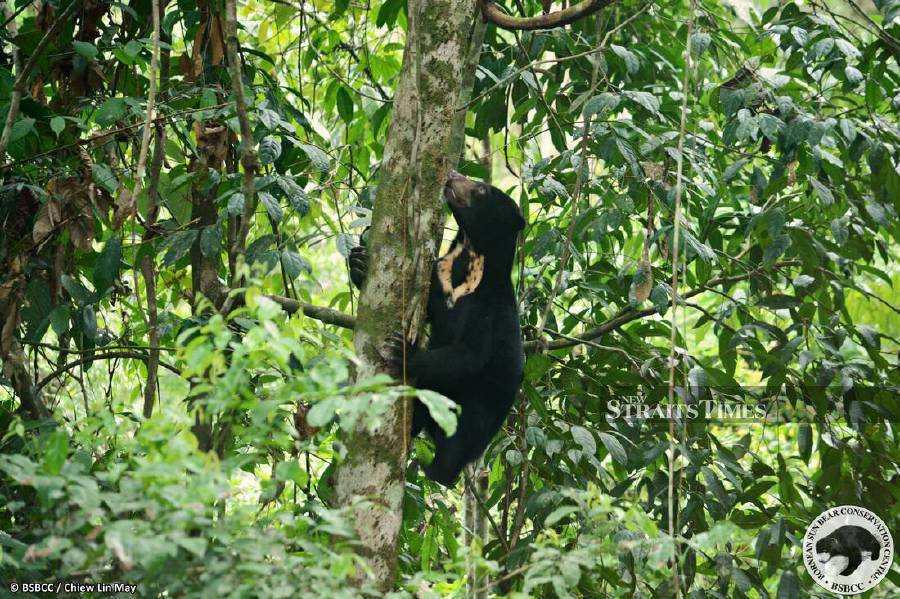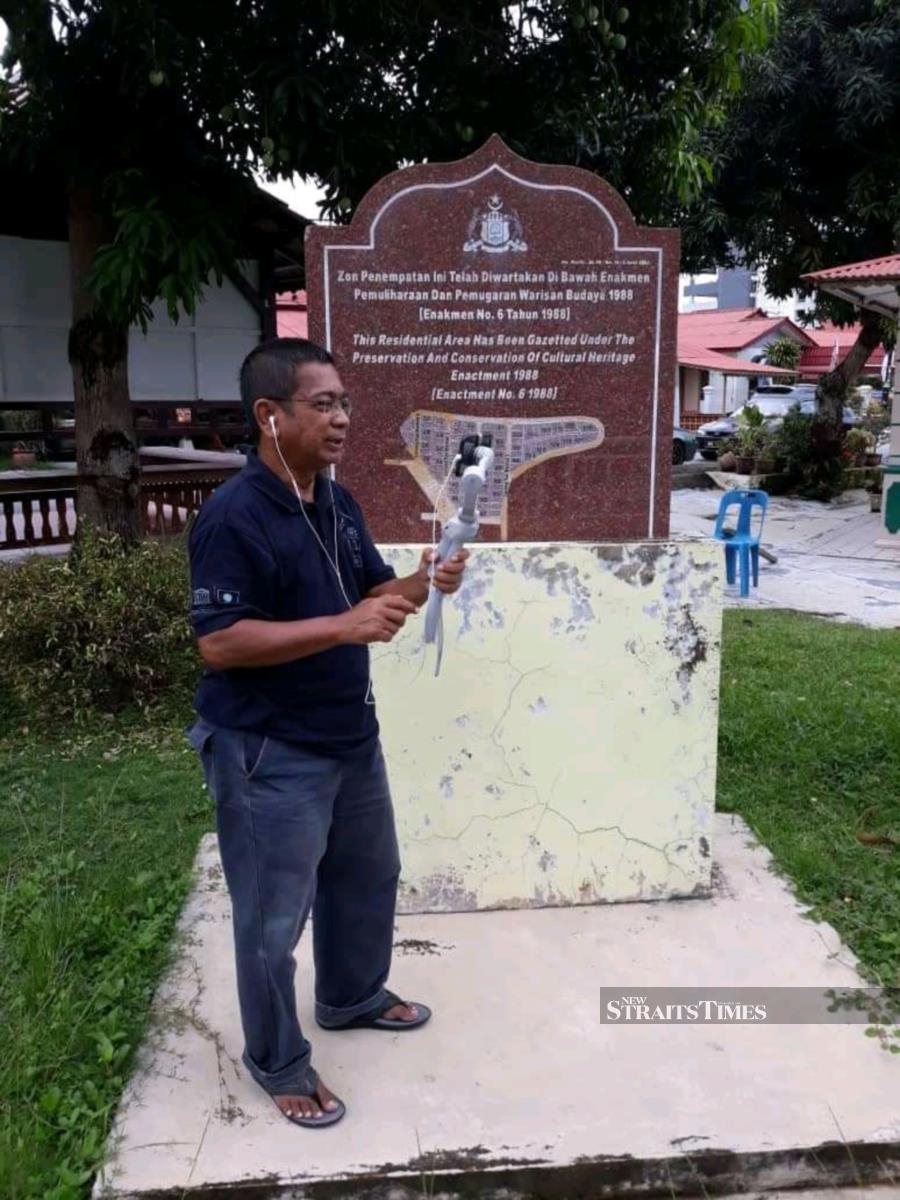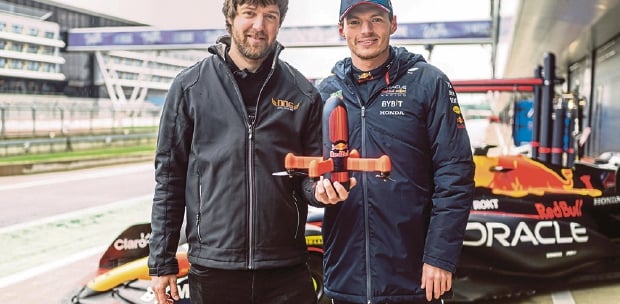Are you game for a virtual travel experience? Zulkifly Ab Latif shares his experiences 'visiting' the Bornean Sun Bear Conservation Centre in Sandakan and Kampung Morten in Melaka. All in one day!
FIFTY-ONE-year-old wildlife biologist Dr Wong Siew Te leads us to a fenced enclosure beside a raised viewing platform set amidst a lush rainforest. It is 9.30am and the morning sun can be seen shining long columns of light through the forest canopy and unto the forest floor.
A man appears carrying a large bucket of papaya cut into chunks and hands it to Wong. Immediately, five jet black shadows emerge from the rainforest out into an opening near the enclosure's fence. I hear loud barking, similar to a dog's.
Wong takes a handful of papaya and throws it inside the enclosure and the shadowy figures draw closer within my sight.

Wong is feeding five juvenile sun bears, which is the smallest species of bear in the world. Scientifically known as Helarctos Malayanus, the sun bear gets its name from the pale crescent or horseshoe shape on its chest which is said to resemble the sun setting or rising.
One of the bears stands tall on its hind legs, as if asking Wong for more fruit and I can see clearly the patch on its chest. This bear is among 45 sun bears currently under care and rehabilitation by Wong and his team at the Bornean Sun Bear Conservation Centre (BSBCC), located in Sandakan, Sabah.
Since its establishment in 2008, the centre has rehabilitated and reintroduced eight sun bears back into the wild, with three more scheduled to be released.
Unfortunately, the three bears will have to wait a little while longer for their taste of freedom due to the current Covid-19 pandemic, which has severely affected the conservation centre's work.
Sitting on his mother's lap, a young boy asks questions about the sun bears that are enjoying their papaya behind Wong. The Penang-born wildlife biologist enthusiastically answers, carefully choosing words and terms so that the child may understand him better.
It's evident to me that Wong has had plenty of experience with children's fascination with the sun bears when they visit the centre with their families.
But the surprising fact is that the child and his mother along with myself and other members of the group following Wong are not really there with the good doctor, at least not physically.
We are all hundreds of kilometres away from Sandakan, scattered throughout the country. For the past hour, we have been following, listening and talking to Wong through our laptops and mobile devices using an online video conferencing platform.
A SIGN OF HOPE
The Covid-19 pandemic has dashed travel plans for many this year. And with the Conditional Movement Order (CMCO) that is now implemented in nine states in Malaysia, inter-state travel is further restricted, making visits to destinations like the Bornean Sun Bear Conservation Centre impossible.
Tourism has been one of the worst-hit industries in the country due to new normal standard operating procedures (SOP) and restrictions and along with it, important wildlife conservation centres like the BSBCC are not able to generate revenue from visitor ticketing and souvenir sales.
Besides reaching out to the generous public to raise enough funds for the bears' food, maintenance, medical care and daily operations, Wong has teamed up with Buddyz.co, a budding experiential travel platform to promote his virtual tour of the centre that starts daily at 9am.
At first a bit sceptical of the online tour, I must admit that after getting to personally ask and talk to an expert such as Wong and see the bears roam, stand and bark behind him, I am now far more open to the thought of joining other similar tours.
The level of engagement, interaction and information gained from the tour is far more than I had expected. To be honest, I was expecting more of a Show and Tell experience and not the deep insight into the natural world of the planet's smallest bear species, the threats of deforestation and poaching faced by them and the struggle of the conservation centre.

The curious child, Aryan giddily stirs in excitement on his mother's lap as a sun bear walks closer to Wong's camera view. It gently barks and sways its head side to side, perhaps curious as to what Wong is doing.
The wildlife biologist pans the camera so that he and the bear are within the frame and asks, "How cool is this?"
Wong's smile is proof that he clearly loves the bears and his work at the centre, despite the current challenges and difficul- ties compounded by the pandemic.
Wrapping up the tour, Wong thanks the virtual tour group for taking the time to join him. There's a slight hint of sadness in his voice when I ask about the centre's plan in the future.
Unlike a normal business that can simply close shop, Wong says that the centre will continue to persevere and work to remain resilient.
A PEEK INTO HERITAGE
At around 4pm, I head out to a small warung near my house here in Kota Tinggi, Johor. Ordering a glass of Nescafe Tarik and some hot pisang goreng, I open my tablet for my next virtual tour, this time to the state of Melaka.
The ever friendly auntie of the warung asks if I'm doing some work. I chuckle and answer that I am going travelling.
Logging onto the conferencing platform at 4.30pm sharp, Shaukani Abbas lets me into the online meeting room. The 63-year-old tour guide, who has with him almost 29 years of experience, has also started offering virtual tours of the many interesting spots within the Unesco World Heritage Site of Melaka.
Peeking into the smartphone camera that he's holding, Shaukani welcomes me and other members of the group to Kam- pung Morten, a traditional Malay village that was built in 1922 by the river bank in the heart of Melaka town.

The only remaining riverine village in the historic town, Kampung Morten still retains its rustic old world charm.
Walking towards a monument engraved with the village's history and information, Shaukani wastes no time in regaling us with the history of the site we are "visiting".
I find out that the village is named after Frederick Joseph Morten, a British Land Commissioner who helped local villagers secure a loan and subdivided the land into 100 plots. Although I have visited Melaka many times, interestingly this is the first time I hear about the village.
Shaukani continues with his on-site tour, panning his camera so we can see a landscape view of the kampung houses that line the road beside the river. He stops at Rumah Merdeka, a house decked in the Jalur Gemilang with a large signboard fea- turing the word Merdeka (Malay for independence).
Entering the house after the compul- sory Muslim greeting of Assalamualaikum, Shaukani proceeds to give us a thorough view of the house's interior like the seram- bi (verandah), rumah ibu (main area) and dapur (kitchen) and its traditional functions.
Antiques and vintage items such as old typewriters, radios and lanterns line the shelves, tables and cupboards of the house, making the house a living museum of yesteryear.
Walking to the kitchen area, we are introduced to Mak Cik Aminah, who warmly smiles at the camera as she prepares some kuih. The owner of the house who was born and raised here, Mak Cik Aminah giggles when Shaukani takes a sample and cheek- ily says that he is tasting for everyone in the group. Coincidentally, Mak Cik Aminah is known to prepare a special menu of boiled tapioca served with spicy anchovies every year on the eve of Merdeka Day.
Back at the rumah ibu section of the house, Mak Cik Aminah demonstrates the correct way to wear the sarung typically worn by men and women in rural Malaysia.
An hour almost gone, and my heart aches to actually walk behind Shaukani as he walks through the small footpaths of the charming little village. He stops at a small warung to say hello to its patrons who then wave and smile at the camera.

Nearing the end of the tour, we visit the house of a man who spends much of his free time building wooden scale models of traditional Malay houses. Proudly smiling into the camera, he holds up a model he has recently built.
Even though I am about 236km away, the warmth and friendliness of Kampung Morten's folks can truly be felt as well as their pride in the beauty and charm of their historic homes.
SEPARATED BUT STILL CONNECTED
Change is perhaps the only constant thing in life and people like Wong and Shaukani have embraced change in order to live through the pandemic. Initially approaching the concept of virtual tours as a salve for my wanderlust, I am quite surprised to discover that it is also a way to learn and discover new things out in the world, things that I normally would not have known about even though I'm to visit physically.
Rather than seeing it as a temporary solution for tourism players to survive, I now see it as a new and legitimate tourism product, one that should be embraced and built upon.
It is in no way similar to watching a host on a travel programme showing off destina- tions but it is something far more intimate, insightful and keeps us all connected.
FAST FACTS
Buddyz.co is a travel platform powered by locals who are experts in their own fields. The travel platform aims to inspire a new and better way of travel such as getting to know a place through the eyes of a local and untold stories that give more meaning to the place.
For more information, visit www.buddyz.co or Whatsapp 014-367 2134.
TRAVEL FILE
THE 45 bear residents of the Bornean Sun Bear Conservation Centre need about 150kg of food a day, that sums up to almost RM12,000 a month. The Bornean sun bear is half the size of the Malayan sun bear found in Peninsular Malaysia.
The sun bear reaches breeding maturity at 4 years old, which is when most are released back into the wild after fully rehabilitated.
The sun bear is poached for its meat and body parts, either for exotic food or traditional Chinese medicine.
Since the implementation of the Movement Control Order in March, the centre has rescued three cubs. This, however, is alarming since it may be a sign that the bear has been poached due to financial difficulties brought upon by the pandemic.
For more information on how to contribute to the Bornean Sun Bear Conservation Centre, visit bsbcc.org. my or email [email protected]




